The Surefire Way to Improve Creativity… or Kill it

“Don’t think. Thinking is the enemy of creativity” – Ray Bradbury
Throughout my career at graphic arts firms and agencies, a common thread is that many people resist structure, believing that processes and procedures inhibit creativity. Whether driven by a reluctance to change, or an honest belief that a “free-wheeling” culture fosters innovation, it’s easy to understand this attitude because there’s a certain appeal to it. Why waste time following procedures? However, nothing could be farther from the truth.
In reality, lack of defined procedures inhibit creativity by channeling energies into administrative, logistics and error correction activities that don’t provide value to the firm or its clients. In other words, when staff isn’t playing by the same rulebook, they waste time figuring trying out what others are doing or fixing the mistakes that invariably occur. Small businesses can operate this way for a while, since employees often work in close proximity. But as the business grows, lack of coordination will constrain growth and lead to big problems down the line.
Structure allows creativity to flourish by clarifying roles and bringing consistency to operations. Whether you’re a freelance creative, an advertising agency, a graphic arts firm or internal department, here are four areas of focus that will have an impact on your creativity and bottom line:
Define the Workflow: Work should flow through the parts of your organization in a predefined way. From intake through deliverable, a consistent workflow that is understood and followed by all staffers reduces uncertainty by mapping out responsibilities of each team member and what is expected. Over time, these procedures become internalized so that everyone understands what needs to be done and no longer needs to think about it.
Define the Scope of Work: The scope for each project must be fully fleshed out before any work is done. Typically, this information is captured, documented in a consistent manner and shared with the client and all members of the team, helping to get everyone on the same page. Well defined project specifications help develop targeted milestones and deliverables that meet objectives while reducing the potential for miscommunication and error.
Define the Timeline: Time is a valuable commodity, particularly when multiple projects are competing for limited team resources. There never seems to be enough of it. Yet when properly managed, moderate time pressure is shown to enhance creativity by sharpening focus and pushing the process forward. Once the scope of work is established, drive projects through your workflow by setting internal milestones that will keep the team focused while meeting all deadlines.
Define and Track the Budget: Creativity comes at a cost. For creatives, agencies and graphic arts organizations this is generally calculated as the time required to process, manage, produce and deliver plus material costs and expenses incurred. It’s essential to accurately capture the financial implications of work as the deliverable must not only meet the clients’ needs, it must do so within an agreed budget. Over time, close financial tracking also provides feedback that can be used to improve the process, assuring that all goals are met.
To some, this discussion may seem basic but it’s surprising how many firms, particularly smaller ones, fail to adequately structure and monitor their work. This is a shame because it’s never been easier to do.
Once limited to the largest corporations, third party systems geared to specific industries or categories are now available to firms of all sizes for tracking workflow, projects, timelines and budgets. The best of these adapt to and improve internal processes, becoming integral parts of the organization because they are flexible, adaptable and evolve over time as needs change. Many can be purchased as web-based SaaS (Software as a Service) subscriptions, limiting cost and eliminating internal hosting requirements.
After leading these initiatives, I understand that re-designing and optimizing internal processes can be difficult but it’s well worth the effort. Because once our teams no longer needed to think about process they were freed to focus on the work, allowing creativity and productivity to soar.

Leave a Reply